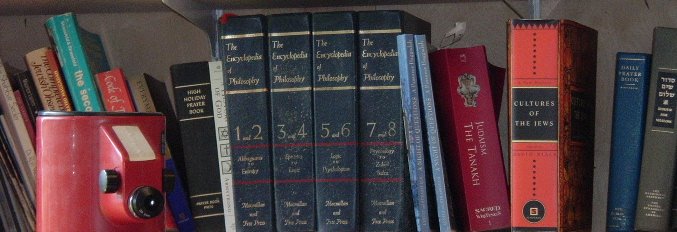
The Torah portion this week is one of the true dividing lines in modern Judaism: Liberal Jews like myself interpret this portion historically and metaphorically; Orthodox Jews sit somewhere in the middle; Torah literalists, eschatologists and other "ultra" types want to recreate the Temple and the taboos of pre-Rabbinic practice
Parshas Chukkas begins with the laws of the Parah Adumah, the Red Heifer. Any Jew who has had contact with a corpse, even indirect contact such as walking in a cemetery or being under the same roof as a corpse, becomes ritually impure (“tamei”). The only way to remove his tum’ah is through sprinkling him with the Parah Adumah ashes.The answer to that is a Jewish version -- yeah, that came from Judaism, too -- of the Prodigal Son principle.
Nowadays, with the absence of the Red Heifer ashes, we are all regarded as ritually impure, since in the course of day-to-day life avoiding all contact with a corpse is not feasible. (Consider that entering a hospital creates a likely situation of “being under one roof with a corpse,” and even walking outside leaves open the possibility of “walking over an [unknown] grave”.)
Rambam (peirush ha-Mishnayos; Parah 3:3) asks: Seeing as obtaining Parah Adumah ashes requires the services of an “ish tahor” — one who is already pure — how will it be possible to re-establish the mitzvah of Parah Adumah in the future (when Moshiach comes)? It seems, he answers, that we will have to seclude two small infants from society, and ensure they never leave the premises of a ritually-pure home built especially for them until they reach the age that they are able to supervise the making of a new set of Parah Adumah ashes. This is an acceptable way of obtaining the ashes.
He concludes as follows:For there is no [practical] difference between one who was never tamei to a corpse, and one who was tamei his whole life and was purified [through the Parah Adumah process], except that one who has become purified [after being tamei] is on a higher level of purity than one who was never tamei to begin with, since [the Torah] calls him ‘tahor,’ [but still, both are acceptable to create the new ashes].In a nutshell, Rambam observes that the Torah ascribes greater purity to one who was tamei and rendered pure through the Parah Adumah ashes [in that the Torah calls him “tahor” — pure], than it does to one who is inherently tahor, never having been in contact with a corpse. An insightful observation — but why? How is it possible that one who was once tamei is on a higher level of purity than one who was never tamei to begin with?
With the establishment of the State of Israel, this was probably inevitable. The return from Diaspora in the Persian/Roman age produced a great diversity of responses to the loss of the First Temple and creation of the Second: Sadducees were the Temple Priests, Torah literalists and political collaborators to protect their position (and remind me very much of the ulta-orthodox position in Israel today); Pharisees and Scribes were the Diasporic teachers, creators of the Synagogue tradition and the Oral Law preserved in Talmud and Mishnah (they also absorbed the messianic tradition from Persia), adaptors and ethical thinkers whose legacy is carried on in both the moderate Orthodox and Liberal traditions; Essenes and other eschatologists were Torah literalists with a messianic bent (kind of remind me of Christian Zionists, actually) who rejected the corrupted politics of the Sadducees; Zealots, the first Zionists, who rejected political collaboration in favor of an independent Jewish nation but who had no particular religious affiliation; assimilationists, of course, have existed in every age, and in every age the literalists have failed to distinguish between modernizers and rejectors of the tradition.
Ultimately, the loss of the Second Temple -- due in no small part to political infighting -- led to the ascendancy of the Rabbinic tradition. Now, perhaps ironically, there are probably as many "rebuild the temple" literalists living in the US as there are in Israel (note the first link above), and, aside from another (God forbid) catastrophic event, I don't see what will prevent these factions from becoming entrenched positions.
4 comments:
An enjoyable post...thank you! I liked your reminder about the Prodigal Son origin. It amazes me how many Christians actually forget they are studying Jewish history and forget that Jesus was a Jew. Your post reminds me I need to be better informed on current Jewish issues. It is unexcusable that I don't know more...
Thanks. To be honest, I still don't really understand the prodigal son, but it's interesting to note the connection.
I've had a similar complaint about most of the world and Western history textbooks which I've used over the years: the almost complete lack of Jewish context post-Diaspora reinforces the sense that Christianity came "out of nowhere" and that Judaism doesn't really exist from the Second Temple to the founding of Zionism....
Any idiot can be a fundamentalist- but it takes a Yiddishe Kop to be a neofundamentalist.
The short answer is "I don't really know." Like the red heifer, that may fall into the category of questions to be answered when the messiah comes. I'm not sure, though, that most authorities interpret Lev. 13-14 to mean "mildew": Most interpretations I've seen suggest rather that it's a physical manifestation of specific sin (usually lashon hora, gossip), and as such, more of a moral matter than a construction matter.
Post a Comment